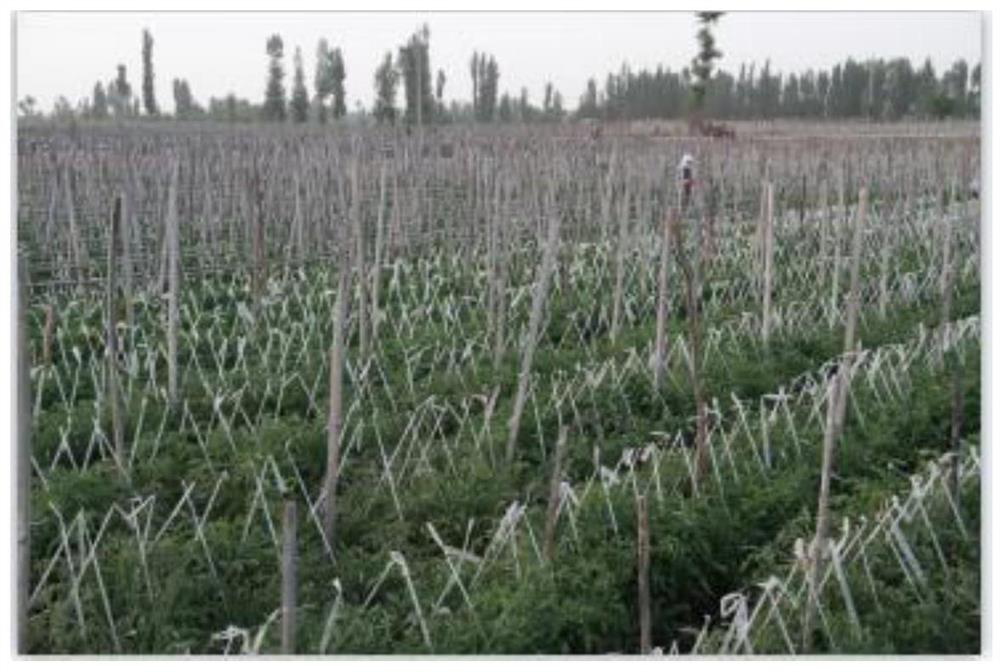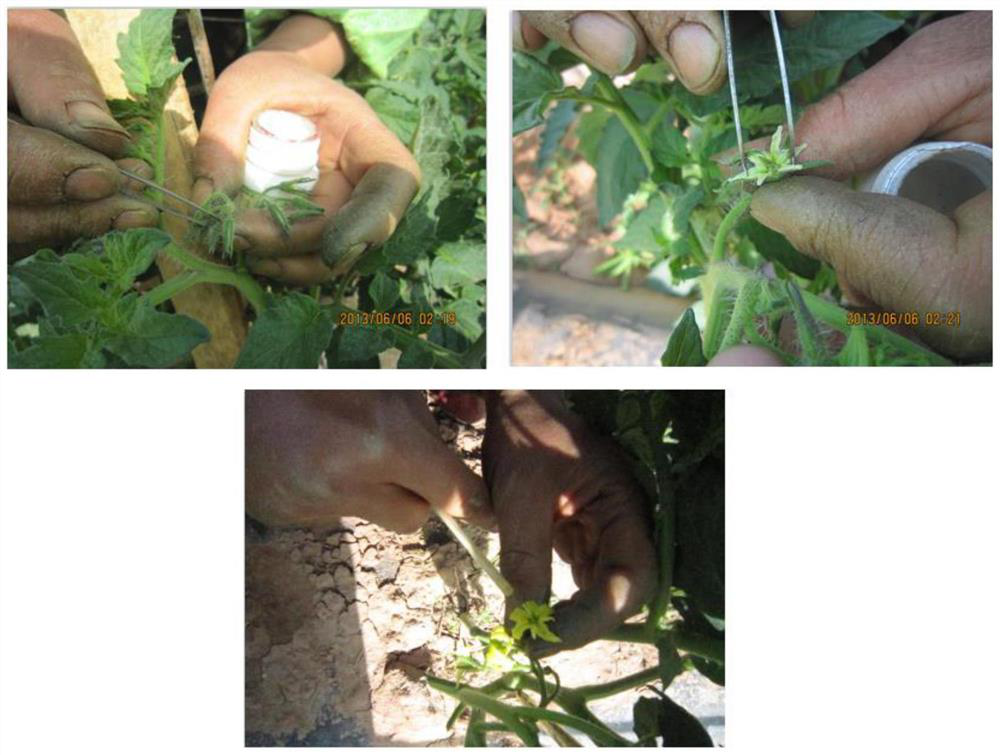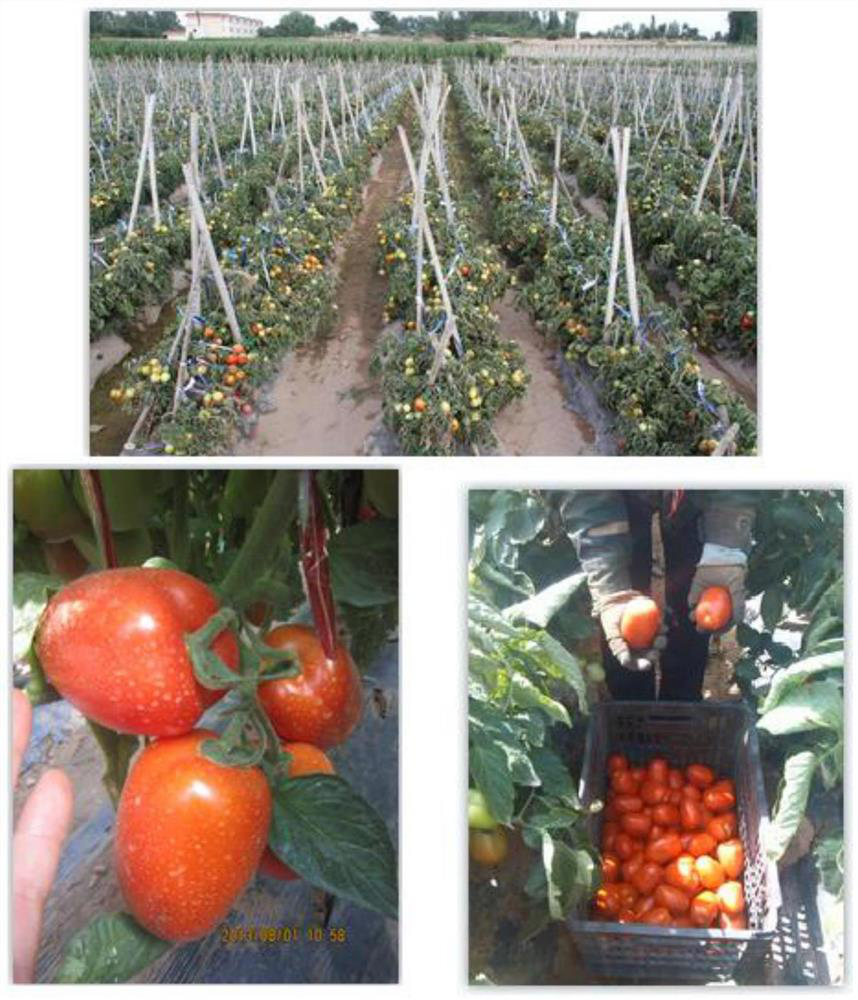Tomato hybrid seed production method
A technology of hybrid seed production and tomato, which is applied in the field of genetic breeding, can solve the problems of difficult selection of flowers, poor growth of greenhouses affecting pollination and fertilization effects, and low seed production purity, so as to promote the improvement of seed production purity and quality, Ensure the effect of pollination and fertilization and the quality of pollen
- Summary
- Abstract
- Description
- Claims
- Application Information
AI Technical Summary
Problems solved by technology
Method used
Image
Examples
Embodiment 1
[0038] 1. Site selection and isolation
[0039] (1) Site selection
[0040] Choose loam or sandy loam with organic matter content ≥ 1%, convenient drainage and irrigation, loose soil, pH value 6-8.5, and no quarantine diseases and soil-borne diseases in the previous crop.
[0041] (2) Isolation
[0042] During seed production in plastic greenhouses, use 25 mesh to 40 mesh (preferably 25 mesh) insect-proof nets to isolate the air vents. There is no isolation area for seed production in the net room. When producing seeds in the open field, isolate them from other tomato varieties by more than 100m.
[0043] 2. Seedling cultivation
[0044] (1) Seedlings are raised in solar greenhouses and plug trays, and the seedling substrate is made of peat: vermiculite: waste mushroom materials in a mass ratio of 1:1:1. Seedling temperature 25 ℃.
[0045] (2) Sowing
[0046] On February 23 (it can be in the middle and late February), the seeds are mechanically sown into the plug trays, 1...
PUM
 Login to View More
Login to View More Abstract
Description
Claims
Application Information
 Login to View More
Login to View More - R&D
- Intellectual Property
- Life Sciences
- Materials
- Tech Scout
- Unparalleled Data Quality
- Higher Quality Content
- 60% Fewer Hallucinations
Browse by: Latest US Patents, China's latest patents, Technical Efficacy Thesaurus, Application Domain, Technology Topic, Popular Technical Reports.
© 2025 PatSnap. All rights reserved.Legal|Privacy policy|Modern Slavery Act Transparency Statement|Sitemap|About US| Contact US: help@patsnap.com



